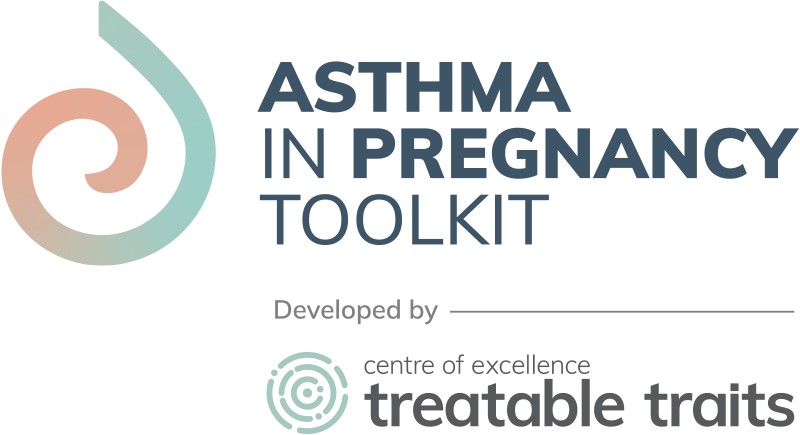Respiratory changes during pregnancy
Several respiratory physiological changes occur during pregnancy. Changes in spirometry and respiratory measures during pregnancy are summarised below.

The effects of hormones on ventilation
Estrogen and progesterone increase during pregnancy. Estrogen acts to increase the number and sensitivity of progesterone receptors within the primary respiratory central areas (Weinberger et al. 1980). It is thought that progesterone acts as a respiratory stimulant and causes an increase in ventilation by decreasing the threshold and increasing the sensitivity of the central chemoreflex response to carbon dioxide (Bayliss and Millhorn 1992, Hegewald and Crapo 2011). Thus the ventilatory response in pregnancy is augmented, and results in physiological hyperventilation of pregnancy. The resulting effect is an increase in resting minute ventilation (VE) and an increase in tidal volume (VT) by 30-50% (Hegewald and Crapo, 2011). Oxygen consumption also increases to meet the rising maternal metabolic processes and fetal demand (Prowse and Gaensler 1965).

Spirometry and static lung volumes
In pregnant women, spirometry values FEV1 and FVC fall slightly or are unchanged and FEV1/FVC ratio remains unchanged (McAuliffe et al. 2002, Grindheim et al. 2012, Jensen et al. 2021). In one study, baseline FEV1% was found to be 9% lower in pregnant women with asthma, versus women without (Jensen et al. 2021).
To the best of our knowledge, there are limited data available on bronchodilator responsiveness range in the pregnant population with and without asthma. For all individuals (whether pregnant or not) measurement of spirometry before and after administration of a rapid onset bronchodilator is considered reversible (i.e. a positive bronchodilator response) if there is a change of >10% relative to the individual’s predicted value for FEV1 or FVC (Stanojevic et al. 2021). It is important to note that a ‘normal’ response (i.e. the absence of a positive bronchodilator response) does not exclude airways disease.
Changes in static lung volumes during pregnancy include a reduction in functional residual capacity (FRC), expiratory reserve volume (ERV) and residual volume (RV). In pregnancy the diaphragm is displaced upward by 4cm and the transverse and anterior-posterior (AP) diameter of the chest increases by 2.1cm (Weinberger et al. 1980, Hegewald and Crapo 2011). The reduction in FRC is due to the elevation of the diaphragm, and changes to chest wall configuration. Total lung capacity is maintained by the subcostal angle increasing gradually, as well as the changes in chest wall diameters and chest wall circumference. Inspiratory capacity (IC) increases during pregnancy (Hegewald and Crapo 2011).
Any abnormal spirometry results in a pregnant woman should prompt further evaluation of possible respiratory disease (Hegewald and Crapo 2011).
